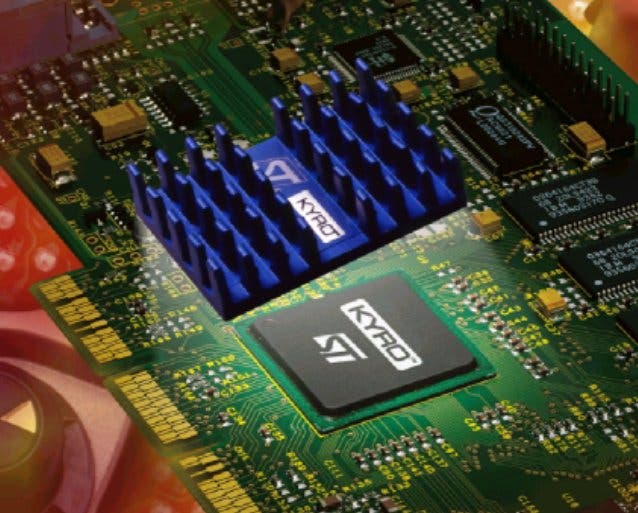Kyro 3D graphics card (hands-on)
New 3D graphics chip previewed
We were recently lucky enough to get our hands on a pre-release Kyro board for some testing here at EuroGamer. It wouldn't be fair to attempt to review it at this stage though, as the chip wasn't running at full speed (115MHz rather than the expected 120/125MHz), and the board itself does have a few issues that make it a little unstable. But it was enough for us to get a feel for how the card may stack up against the opposition...

PowerVR explained
PowerVR works more efficiently by not rendering any unseen pixels, whereas traditional architectures render a great deal of information which won't ever reach your monitor.
These unseen pixels are referred to as 'overdraw', and it forms the basis of the effective fill rate of the Kyro chip. In order to avoid rendering these useless pixels, a display list is created before the scene is rendered. This sorts everything in back-to-front order, and applies an algorithm to determine which surfaces are obscured by others. The rendering phase can then be applied to only the visible pixels.
An added benefit of this approach is a reduction in the number of memory reads/writes which are needed. As a result of this bandwidth requirements for the Kyro are greatly reduced, which means that much cheaper SDRAM can be used, as opposed to the more expensive DDR memory found on GeForce 2 graphics cards. The preview board came loaded with 64Mb of memory, but retail boards will probably ship with only 32Mb, as that will be more than sufficient for the Kyro.
Performance
The real question then is how does it perform? Well, having run it through a few tests on a Pentium III 600 system, the Kyro appeared to perform extremely well, and certainly provided some serious competition to the Voodoo 5 5500 and a GeForce DDR. If you want to see just how much competition the Kyro provided, take a look at the benchmark results below -
As we can see from the 3D Mark 2000 scores, the Kyro is a more than capable accelerator. It gives the Voodoo5 5500 a hard time, beating it at everything other than 1024x768. This isn't too surprising, as the Kyro driver is still rather immature and is potentially holding the chip back a little.
Also do bear in mind that this particular preview chip is running slower than the expected speed of the retail board. Admittedly the Kyro lags behind the GeForce DDR, but that's hardly a disgrace considering that it is virtually the fastest card that you can buy at the moment.
The Quake 3 numbers also show that at low resolutions the Kryo is capable of churning out higher frame rates than the Voodoo5 5500. Once again though, at higher bit depths the Kyro's performance suffers a little. Both the GeForce SDR and DDR seem to be quite capable of beating the Kyro in the Quake 3 test, but with the Kryo3D marking VideoLogic's first attempt at a full OpenGL ICD (Installable Client Driver), it probably suffers from a greater level of immaturity than the other drivers.
Conclusion
The Kyro is an exceptional part, even in this extremely early 'preview' level state. I have always been an advocate of the PowerVR approach, but have been disappointed by the lacklustre performance of the actual shipping products in the past.
From these early results it's good to see that the alternative architecture is finally proving itself, and proving itself well. Hopefully with better drivers and a higher clock speed the Kyro3D should get even faster.
And if 3dfx's acquisition of GigaPixel is anything to go by, there seems to be a great deal of interest in 'tile-based renderers', which can only bode well for the PowerVR way of doing things. Maybe 2000 will be the year it finally takes off...
-
Kyro 3D preview (first look)
Spring 2000 Graphics Card round-up
